Training: Slinging loads
Manual work is required when transporting containers by crane. In order to avoid accidents when "slinging loads", it is important to know how to recognize defects in addition to the professional, safe use of slinging and load handling equipment. For this reason, all employees who are tasked with slinging loads must be trained.
Our training course "Lifting loads" reliably prepares your employees for the professional lifting of loads in accordance with DGUV regulation 109-017. Participants are taught the theoretical and practical basics of using slings and load handling attach ments.

All information about the training "Slinging loads
Legal basis
According to DGUV Rule 109-017, care must be taken to ensure that load lifting and slinging equipment is used in such a way that no persons are endangered. Accordingly, companies are only obliged to assign persons who are demonstrably suitable to independently attach loads.
Therefore, the only persons who can be considered as a so-called attacker are those who
- have reached the age of 18,
- meet the physical and mental requirements,
- are qualified and demonstrably trained for the independent slinging of loads.
Contents of the training for slinging loads
In our training, you will learn everything you need to know about slinging loads. This includes:
- Theoretical & practical basics regarding the use of slings and load handling attachments.
- Legal requirements
- Liability & Responsibilities
- Types of slings & load handling devices and their handling
- Practical examples
- Physical influences on the sling & load handling attachment
- Example calculation
- Marking
- Testing of sling & load handling attachments
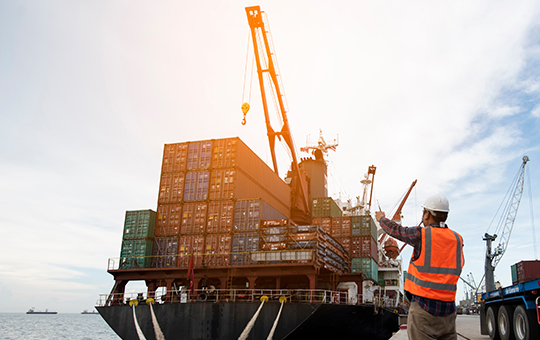
For whom is the "Lifting loads" training suitable?
The training on the use of slinging and load handling equipment is intended for all employees of a company who are in the area of the transport route.
This mainly includes slingers as well as other employees who are involved in slinging loads or are deployed in the vicinity thereof. These could include, among others, operators of cranes.
We come to you: GRUMA Inhouse Training
You would like to train several employees in your company? We can also hold seminars on your premises on request. This allows our training managers to respond directly to the conditions on site.

Overview of your services during training
- Soft drinks, coffee and snacks during the entire training period
- Hot lunch
- Training materials
- Qualified and experienced speakers
- Certificate of attendance

Participation requirements
- Minimum age: 18 years
- Mental and physical fitness
- Command of the German language, both written and spoken
- Behavioral Characteristics: The person is expected to act responsibly, reliably, carefully and considerately.
Frequently asked questions about the training course Slinging loads
The current price of the training on the use of slinging and load handling equipment can be found in our calendar of events.
We also offer in-house training, the cost of which is calculated individually depending on the size of the group, travel distance, etc.
For our training on the use of lifting and slinging equipment you should plan one seminar day (from 7:30 a.m. - approx. 4:30 p.m.)
Various slings and load handling attachments are suitable for load transport with cranes.
Slings are means by which you can connect the load directly to the crane hook, for example:
- Round slings & lifting slings (for loads with sensitive or slippery surfaces)
- Ropes (for loads with smooth surfaces or as a connection between the crane hook and the eye of the load).
- Chains (for loads with non-slippery surfaces)
Load handling equipment is equipment that is suitable for lifting loads directly, such as:
- Pliers
- Gripper
- Lifting clamps
- Trusses, etc.
Yes. After successfully completing the training, all participants receive a certificate of attendance and a driver's license.
According to the DGUV regulation, employers are obliged to instruct their employees at least once a year.
Entrepreneurs may only entrust the independent slinging of loads to persons who are appropriately qualified and who have demonstrated their competence to the entrepreneur.

Do you still have questions?
The staff at the GRUMA Academy will be happy to help you
GRUMA
Academy
Downloads
Training Program of the GRUMA Academy 2023
Further offers of the GRUMA Academy

- We instruct your operators of industrial trucks, cranes, aerial work platforms, earth-moving machines and co. in accordance with the statutory regulations.

- In just one day, you will learn all the relevant knowledge for the crane license in theory and practice.
- Securing loads in accordance with regulations can prevent both accidents and economic damage, thus ensuring safety in operations.

- Do your employees regularly deal with dangerous goods? Register them for the next dangerous goods training according to ADR 1.3.
